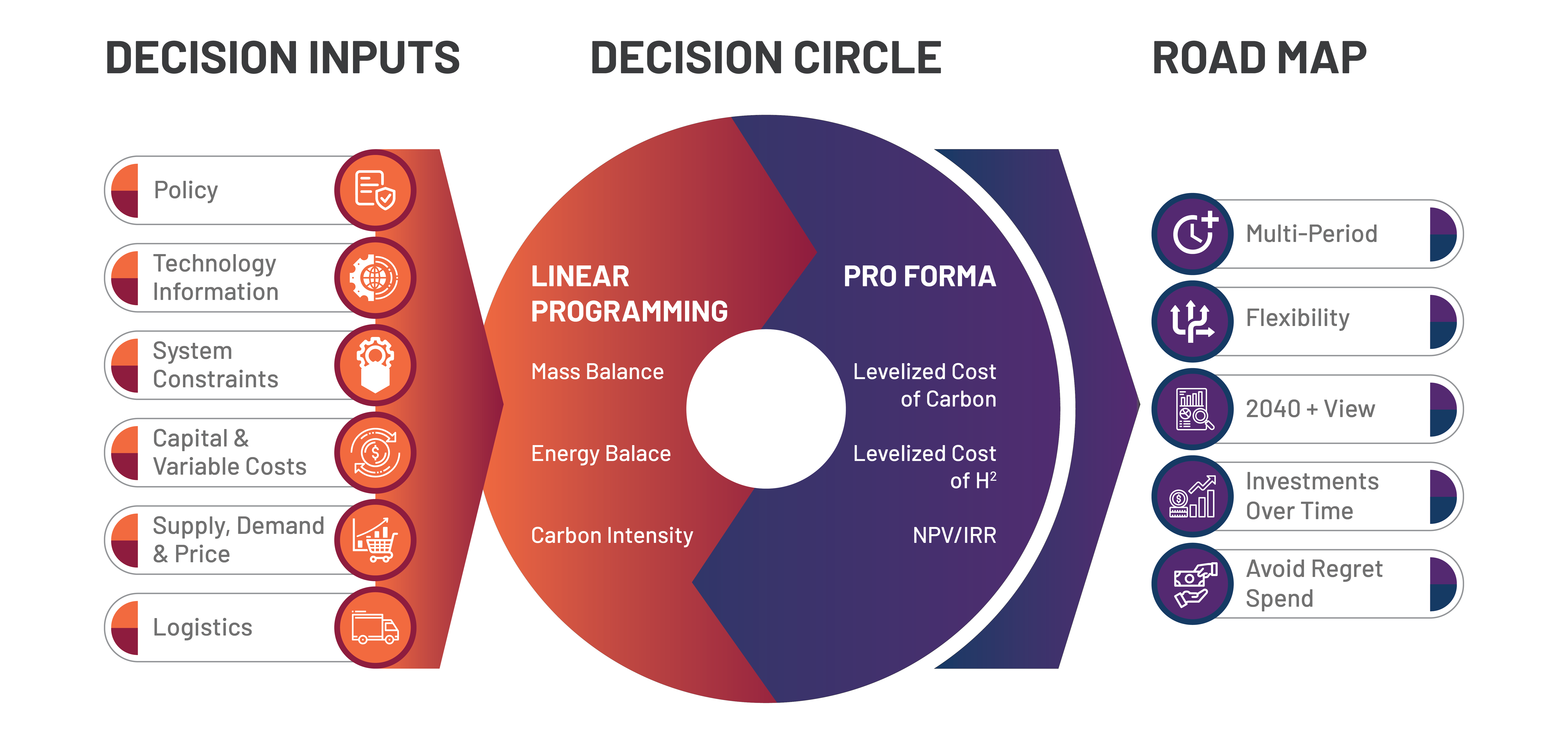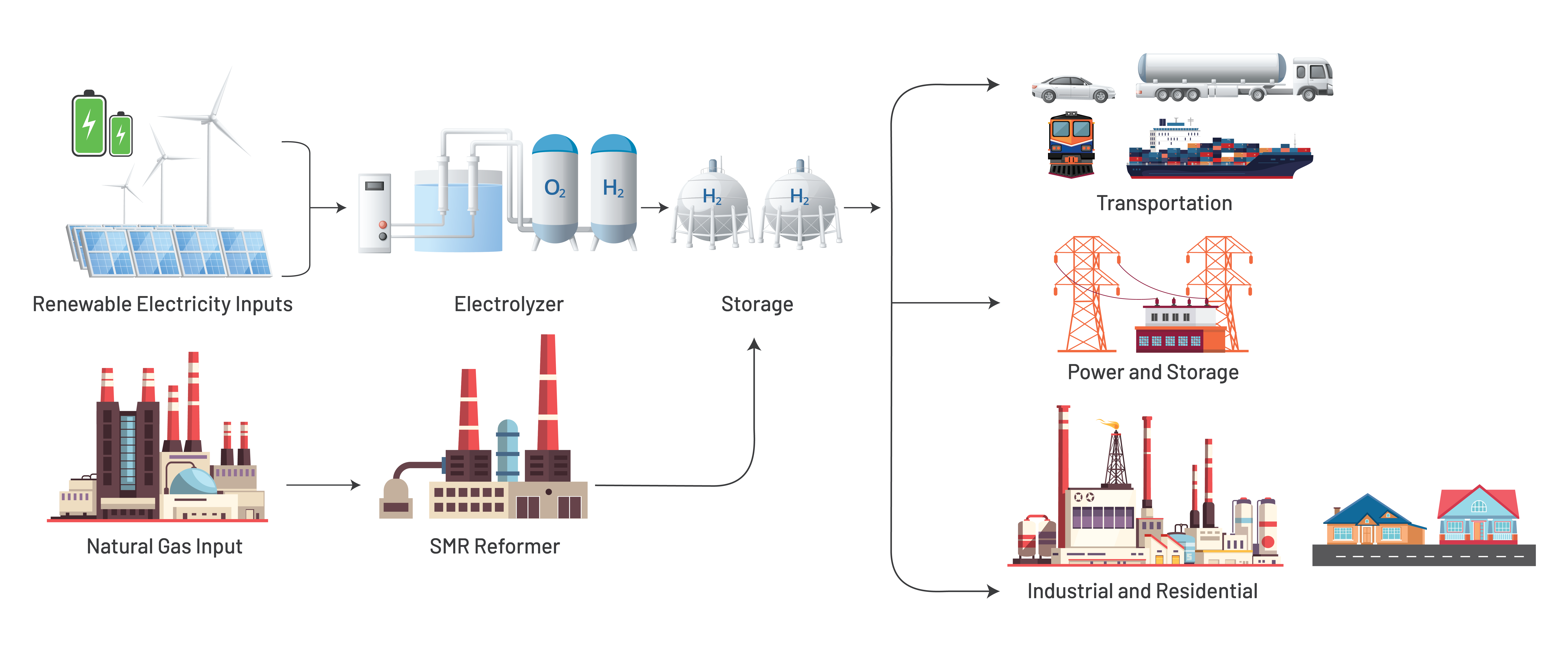Hydrogen already helps power our world and is most commonly used in petroleum refining, petrochemicals, fertilizer production and in other industries. As new ways of producing hydrogen with little or no carbon dioxide (CO2) emissions are developed, transportation, industrial users and utilities could become high-priority markets.
Currently, blue hydrogen is considered the most viable option for economical low-carbon production. It’s produced by using a steam methane reforming process that converts natural gas into primarily hydrogen, water and CO2. Blue hydrogen is considered a low-carbon process because the CO2 is captured on the back end and routed to geological storage or use in enhanced oil recovery.



Trending

AI & Digital Transformation
Cyber Defense
Energy Transition
Smarter Capital Planning
Zero-Emissions Transportation
What We Do

Acquisition & Divestment
Asset Planning & Management
Business Strategy & Transformation
Data, Analytics & AI
Enterprise Technology
Financial Analysis
Industrial Cybersecurity
Policy & Regulatory
Industries

Government & Military
Manufacturing & Industrial
Oil, Gas & Chemicals
Ports & Maritime
Power
Transportation
Water
Solutions




